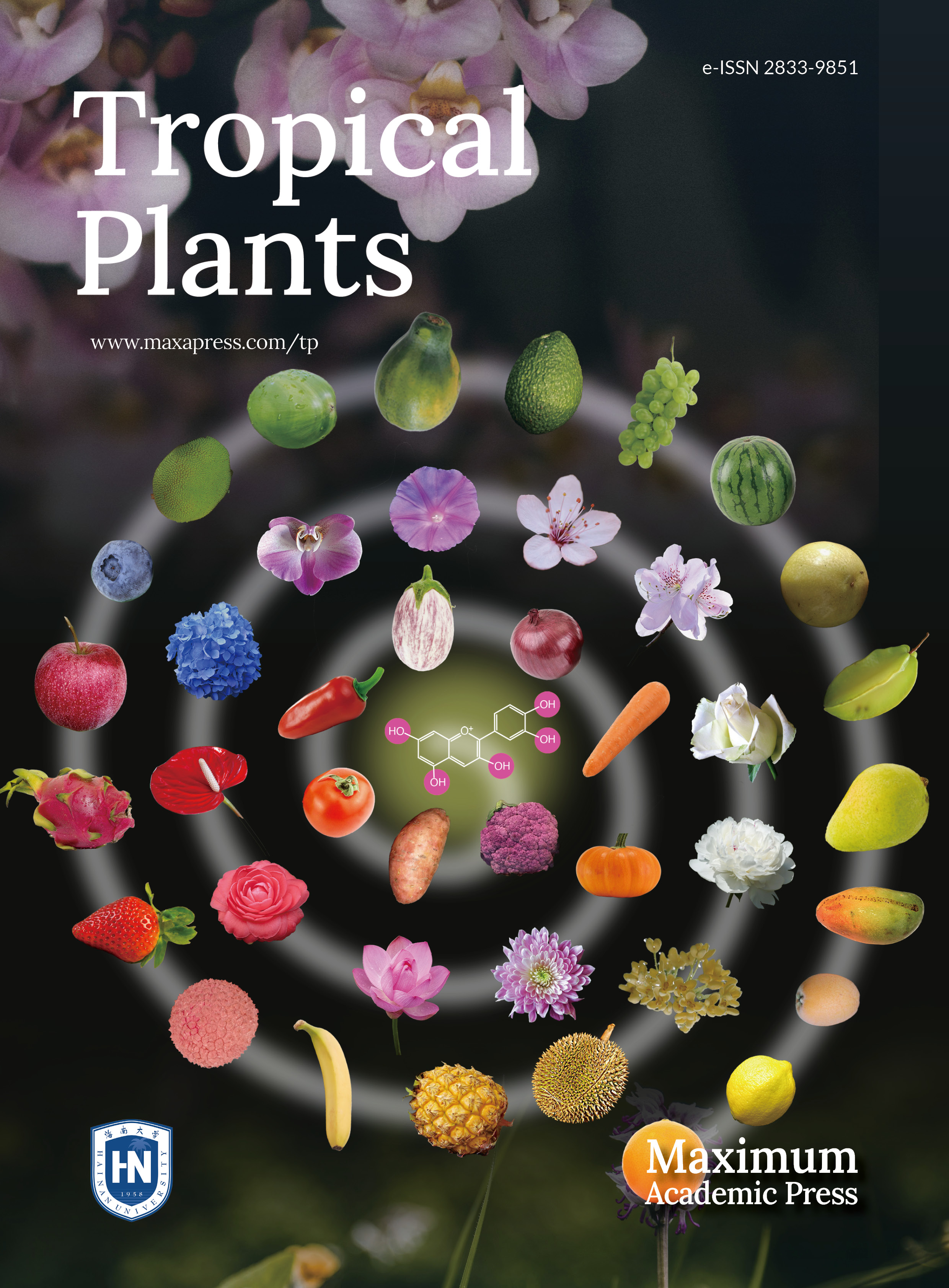-
The increasing global demand for food security and the necessity for environmental conservation have collectively driven the adoption of sustainable and low-carbon agricultural practices[1,2]. This urgency is particularly acute in tropical regions, which face unique challenges related to climate, soil properties, and socioeconomic factors. These regions are often characterized by intense rainfall leading to nutrient leaching, high temperatures causing nitrogen volatilization, and fragile ecosystems vulnerable to environmental degradation. Furthermore, many tropical countries are developing economies with limited resources for agricultural inputs and infrastructure. Biomass-based coated controlled-release fertilizers (BB-CRFs) emerge as a promising technology to address these challenges, offering a potential pathway toward more sustainable and resilient agricultural systems.
Although traditional fertilizers have played an important role in enhancing crop productivity, a series of environmental issues have also been triggered through their application, including soil degradation[3], greenhouse gas emissions[4], and water pollution[5]. These issues are often exacerbated in tropical regions due to intense rainfall, high temperatures, and sensitive ecosystems. For instance, heavy rainfall in Southeast Asia often leads to substantial nitrogen runoff from rice paddies, polluting waterways, and contributing to eutrophication[6]. Similarly, high temperatures in sub-Saharan Africa can accelerate nitrogen volatilization from urea-based fertilizers, reducing fertilizer efficiency, and increasing greenhouse gas emissions[7]. To address these challenges, BB-CRFs have emerged as a promising solution, offering a transformative approach to achieving the vision of a green and low-carbon agricultural landscape[8,9]. The encapsulation of nutrients within biodegradable coatings facilitates the gradual release of essential elements, thereby enhancing the efficiency of nutrient utilization[10], mitigating environmental pollution[11], promoting soil health[12], and fostering carbon sequestration[13]. These factors collectively contribute to the growth of green carbon sinks and enhance the resilience of tropical agroecosystems. Moreover, the reduced need for frequent fertilizer applications can offer economic benefits to tropical farmers.
BB-CRFs represent a pivotal innovation in the agricultural fertilizer industry, demonstrating enormous market potential, particularly in tropical regions. As the global pursuit of sustainable agricultural practices and green carbon sequestration intensifies, BB-CRFs have garnered considerable attention due to their environmentally benign nature and capacity to augment fertilizer efficiency[14,15]. In contrast to their conventional chemical-coated counterparts, BB-CRFs created using naturally degradable materials can ensure controlled nutrient release while minimizing potential risks to soil and environmental integrity[16]. This positions BB-CRFs as a holistic solution that harmonizes increased crop yield with environmental stewardship, crucial for the long-term sustainability of tropical agriculture.
Although the potential of BB-CRFs is recognized globally, there are significant differences in developmental trajectories, technological advancements, market acceptance, and policy support across different regions[17]. This is particularly evident when comparing developed nations with tropical developing countries. This underscores the need for collaborative efforts from governments, research institutions, and enterprises to propel the advancement of BB-CRFs, specifically tailored for tropical applications. Therefore, to improve the performance of BB-CRFs in tropical contexts, reduce production costs, and expand their adoption rate amongst tropical farmers, governments, and international organizations should strengthen research investment targeted at tropical needs, improve policy frameworks that incentivize sustainable agriculture in these regions, and enhance international cooperation focusing on technology transfer and capacity building. BB-CRFs hold considerable promise for advancing sustainable intensification in tropical agriculture by improving nutrient use efficiency, reducing environmental impacts, and supporting the livelihoods of farmers.
-
Bio-based materials, derived from renewable biomass resources such as lignin[18], straw[19], vegetable oils[20], and starch[21], offer a compelling alternative to conventional petroleum-based coatings. These materials are inherently biodegradable and environmentally compatible, thereby contributing to the development of a more sustainable agricultural model. The advantages of bio-based materials over traditional counterparts are numerous and diverse (Fig. 1a).

Figure 1.
(a) Biomass-based coated controlled-release fertilizers (BB-CRFs) vs traditional coated controlled-release fertilizer. (b) The gap in BB-CRFs development between developed and developing countries. (c) Bio-based coating materials from enterprises in different countries.
Multifaceted benefits for soil and environment
-
BB-CRFs offer multiple advantages for soil and environmental health beyond their inherent biodegradability. The controlled-release mechanism significantly enhances nutrient use efficiency compared to conventional fertilizers, reducing the need for high application rates and thus minimizing the risk of nutrient pollution. For instance, Chen et al.[8] found that lignin/paraffin/epoxy resin composite-coated urea increased nitrogen use efficiency by 33% in lettuce. Similarly, Weng et al.[22] reported a 71.75% increase in rice yield with starch/PBAT composite film-packaged fertilizers, attributed to enhanced nutrient release longevity (20–100 days) and reduced water vapor transmission. These improvements stem from the utilization of renewable biomass resources, which decreases dependence on finite fossil fuels[23], promoting resource security and lowering the carbon footprint of fertilizer production. The biodegradability of these coatings ensures their decomposition by soil microorganisms, preventing the accumulation of non-biodegradable waste and enriching the soil with organic matter. This, in turn, improves carbon sequestration, reduces carbon emissions[24,25], and fosters a thriving soil ecosystem by promoting positive interactions with soil microorganisms[26]. Importantly, bio-based coating materials are generally non-toxic and safe for crops and the environment, posing no threat to food safety[27]. Their tunable properties, including hydrophobicity and degradation rate, can be adjusted to meet specific crop and soil requirements, ensuring optimal and synchronized nutrient release[28].
Potential environmental impacts of bio-based coatings
-
While bio-based coatings represent a more sustainable alternative to conventional polymers, their long-term environmental impacts require further investigation. Although biodegradable, the decomposition process and coating properties warrant careful scrutiny. Potential concerns include the release of intermediate byproducts during degradation, which could have unforeseen ecotoxicological effects on soil organisms, water quality, or non-target plants[29]. For instance, certain polysaccharides might release organic acids, temporarily altering soil pH[30]. Under anaerobic conditions common in some tropical soils, decomposition could produce methane, a potent greenhouse gas[31]. Additionally, the introduction of these coatings could alter the soil microbiome, with potential consequences for nutrient cycling and soil health. Finally, the production of bio-based materials, though renewable, requires resources and necessitates life cycle assessments to evaluate their true environmental footprint compared to conventional alternatives.
Mitigating these potential risks requires further research focusing on toxicity studies of coatings and their degradation products, optimized coating design to minimize harmful byproducts and enhance biodegradability, and comprehensive life cycle assessments. This research will contribute to a more complete understanding of the environmental implications of bio-based coatings and guide the responsible development and implementation of BB-CRFs technology. Specifically, studies investigating the effects of various coatings on microbial diversity, nutrient cycling, and soil structure are needed. Furthermore, research into tailoring coating composition and degradation rates to match specific soil conditions and cropping systems will be crucial for maximizing benefits and minimizing potential negative impacts.
-
Tropical agriculture presents unique challenges and opportunities for the implementation of innovative fertilizer technologies such as BB-CRFs[32]. The distinct climatic conditions, soil properties, and cropping systems of tropical regions require tailored approaches to nutrient management[33]. BB-CRFs offer several advantages that are specifically suited to the needs of tropical agriculture.
A key benefit is the ability of BB-CRFs to mitigate nutrient losses, a major concern in tropical environments. Heavy rainfall can cause significant leaching of essential nutrients such as nitrogen and potassium, reducing the effectiveness of fertilizer and contributing to water pollution[34]. The controlled-release mechanism of BB-CRFs minimizes these losses by providing nutrients gradually, synchronized with crop demand. This leads to improved nutrient use efficiency and reduced environmental impact, which are essential for sustainable agriculture in tropical regions.
Furthermore, high temperatures in tropical climates can accelerate the volatilization of nitrogenous fertilizers, resulting in further nutrient loss and air pollution[35]. The protective coating of BB-CRFs helps reduce nitrogen volatilization, preserving valuable nutrients, and minimizing environmental damage.
BB-CRFs benefits for tropical crops
-
The diverse range of tropical crops often exhibit specific nutrient requirements at different growth stages[36]. BB-CRFs can be formulated with specific nutrient combinations and coatings that are tailored to match the unique requirements of individual tropical crops. This targeted approach optimizes the uptake of nutrients and promotes healthy plant growth, which in turn leads to improved yields and quality.
In addition to their role in nutrient delivery, BB-CRFs contribute to the overall health of tropical agroecosystems[37,38]. The degradation of bio-based coatings results in the addition of organic matter to the soil, which in turn improves soil structure, water retention, and microbial activity. This has the effect of enhancing soil fertility and resilience, thereby rendering tropical cropping systems more sustainable and less vulnerable to environmental stresses such as drought and erosion[39]. The enhancement of soil health is a crucial element in ensuring the long-term productivity and ecological integrity of tropical agricultural landscapes.
Optimizing tropical plant nutrition with BB-CRFs
-
The potential of BB-CRFs applications in tropical crops is illustrated by specific examples. In rice cultivation, BB-CRFs enhances nitrogen use efficiency in flooded conditions[40,41]. In banana plantations, it supports robust growth and improves fruit quality[42]. For Mangifera indica L., it optimizes nutrient supply for sustained yields[43]. In sugarcane farming, it enhances nutrient uptake for improved sugarcane quality and yield[44]. These targeted applications showcase the versatility and effectiveness of BB-CRFs in diverse tropical cropping systems.
Potential for enhanced crop resilience
-
Beyond improvements in yield and quality, BB-CRFs hold potential for enhancing the resilience of tropical crops to stresses like drought and pests/diseases. While anecdotal evidence and indirect findings suggest potential benefits in these areas, dedicated research exploring the underlying mechanisms is currently limited. For instance, the improved soil structure resulting from the degradation of bio-based coatings could enhance water retention and drought resistance[18], but direct studies on drought tolerance in tropical crops using BB-CRFs are lacking. Similarly, the influence of BB-CRFs on the soil microbiome may contribute to improved disease suppression, but further research is needed to investigate these interactions specifically in relation to pest and disease resistance in tropical crops.
-
Several factors are converging to create a strong market for BB-CRFs. Consumers are increasingly conscious of the environmental impact of their choices, driving demand for sustainable and eco-friendly alternatives across sectors, including agriculture[45]. This shift in consumer preference aligns with government initiatives worldwide implementing policies and incentives to encourage sustainable agricultural practices, including the use of environmentally friendly fertilizers such as BB-CRFs[46]. There is an urgent need for sustainable agricultural intensification to meet the food demands of a growing global population while minimizing environmental impact, which creates a mature environment for the adoption of BB-CRFs[47]. In addition, the advancement of material science and production processes has resulted in a gradual decline in the cost of BB-CRFs, thereby making them highly competitive in the market[48]. The integration of big data analytics and intelligent technologies into agricultural practices can more accurately and efficiently manage BB-CRFs, thereby enhancing their market potential[49].
Strategic collaboration for accelerated commercialization
-
To fully capitalize on the market potential of BB-CRFs, it is essential that there be strategic collaboration among research institutions, industry stakeholders, and policymakers. The establishment of robust research platforms that foster collaboration between agricultural universities, research institutions, and private companies will facilitate continuous innovation in materials and technologies[50]. The government plays a key role in this endeavor by providing policy guidance, allocating financial support through tax incentives and green credit schemes, and facilitating knowledge transfer to reduce investment risks and encourage private sector participation.
Effective market penetration strategies
-
Demonstration trials and farmer education programs are crucial for showcasing the benefits of BB-CRFs, such as increased yields, reduced fertilizer input, and improved crop quality, while also increasing farmers' understanding of the technology[51]. Enterprises should collaborate with distributors, agricultural cooperatives, and service providers can streamline distribution channels, ensuring that BB-CRFs reach farmers efficiently. Furthermore, innovative business models such as the sharing economy and digital platforms for agricultural investment can facilitate the accelerated dissemination of BB-CRFs[52].
A transformative opportunity for the fertilizer industry
-
By closely monitoring market trends and based on user feedback, BB-CRFs manufacturers quickly respond to improve their products and expand into new niche markets. The distinctive combination of environmental sustainability and high efficiency inherent in BB-CRFs can bring transformative opportunities to the fertilizer industry.
Segmented market analysis and future research needs
-
Understanding the specific needs and preferences of different consumer segments is crucial for developing effective marketing strategies. While comprehensive market research data on BB-CRFs adoption is currently limited, we can offer some preliminary insights. Organic agricultural producers, driven by principles of sustainability and natural inputs, may be particularly receptive to BB-CRFs; however, cost considerations and the availability of certified organic BB-CRFs could influence adoption rates. Adoption among conventional farmers will likely hinge on demonstrable economic benefits, such as increased yields, reduced fertilizer inputs, and labor savings, as well as practical considerations like ease of application. Large-scale agribusinesses may be motivated by the potential of BB-CRFs to improve sustainability performance, meet corporate social responsibility goals, and enhance brand image; scalability of production and consistent product quality will be key factors for this segment. Robust market research is essential to validate these assumptions and refine marketing strategies. Key research areas include consumer surveys to assess awareness and willingness to adopt BB-CRFs, price sensitivity analysis to determine optimal pricing, and distribution channel analysis to evaluate effective outreach strategies.
-
There are notable discrepancies in the advancement and implementation of BB-CRFs between developed and developing countries (Fig. 1b). Developed countries, particularly in Europe and North America, have made significant investments in bio-based coating technologies, driven by a strong emphasis on environmental sustainability and the reduction of reliance on traditional plastics in agriculture[53]. In contrast, while developing countries, including China, have begun to embrace bio-based materials, their progress is relatively nascent, hindered by challenges related to production costs, technological capabilities, and market awareness[54].
Technological advancement: bridging the innovation gap
-
Developed countries have made significant progress in developing various bio-based coating materials based on their advanced capabilities in materials science, industrial technology, and biotechnology (Fig. 1c). These materials range from conventional options such as starch and polylactic acid (PLA) to novel biopolymers and synthetic biology products such as polyhydroxyalkanoates (PHAs), polybutylene succinate (PBS), and bio-based polyethylene terephthalate (PET)[55]. Many of these materials have been successfully commercialized for various agricultural applications. Although China has made remarkable progress in bio-based materials research, there is still a gap in the development and commercialization of novel materials. However, research institutions and companies are actively investing in China to bridge this gap, with a particular focus on improving materials performance and cost efficiency.
Market acceptance: navigating regulatory and consumer landscapes
-
The demand for bio-based materials in developed markets is driven by stringent regulations and consumer preferences. The legislative measures to restrict the use of plastics and promote biodegradable products, coupled with a high level of environmental awareness among consumers willing to pay a premium for eco-friendly options, have created a favorable market environment for BB-CRFs in these regions. In contrast, despite the implementation of environmental policies and initiatives in China, including the plastic ban, practical challenges of enforcement and the price sensitivity of the market pose barriers to the widespread adoption of bio-based products, particularly those with higher production costs.
Policy landscape: fostering innovation and adoption
-
Developed countries have established comprehensive policy frameworks to facilitate the development and adoption of bio-based materials. These measures frequently encompass substantial investments in research funding, tax incentives for corporations, and market development initiatives. A supportive policy environment has been demonstrated to foster innovation, mitigate risk for private sector investments, and provide incentives for farmers to adopt environmentally friendly practices. Similarly, the government has prioritized the development of the bio-based materials industry in China, providing financial support through subsidies, loan interest discounts, and other economic instruments to encourage research and production. Moreover, the application of bio-based materials in agricultural practices is actively promoted in China.
A future of collaboration and global growth
-
Despite the gap in production scale and commercialization of BB-CRFs between developed and developing countries, the global landscape is evolving rapidly. International collaboration and knowledge sharing are crucial, especially in developing countries. Through technological advancements and growing consumer awareness, BB-CRFs are expected to gain broader global recognition in the future and contribute to a more sustainable and food-secure future.
Bridging this gap requires not only technological advancements and increased awareness but also targeted efforts to address the specific policy and financial constraints hindering BB-CRFs adoption in developing countries. A crucial step towards achieving this is the collection of more granular data on these constraints. This includes analyzing existing fertilizer subsidy programs to understand their potential impact on BB-CRFs uptake, quantifying research investments specifically targeted at sustainable fertilizer technologies in developing countries, and conducting in-depth case studies to examine the diverse factors influencing BB-CRFs development and adoption in different contexts. This data will be essential for informing policy decisions, attracting investment, and designing effective interventions to support the growth of the BB-CRFs sector in developing regions and contribute to a more sustainable and equitable global agricultural landscape.
-
BB-CRFs offer a promising pathway towards sustainable agricultural intensification in tropical regions, addressing key challenges like nutrient loss and environmental degradation. Their use of renewable biomass resources and biodegradable coatings enhances nutrient use efficiency, minimizes environmental impact, and promotes soil health. Studies highlighted in this review demonstrate significant improvements in nutrient uptake, reductions in nutrient losses, and increased crop yields compared to conventional fertilizers. The tunable properties of bio-based coatings allow customization for diverse tropical cropping systems. However, challenges remain, including the need for further research on long-term environmental impacts and addressing disparities between developed and developing countries regarding research funding, technology access, and supportive policies.
Future research should prioritize: (1) developing cost-effective, high-performing bio-based coatings tailored to tropical conditions; (2) advancing intelligent controlled-release technologies; (3) conducting comprehensive life-cycle assessments; (4) implementing targeted policies and educational programs to promote wider adoption, especially among smallholder farmers in developing countries; and (5) conducting dedicated market research to understand consumer preferences and optimize marketing strategies. Addressing these priorities through collaborative partnerships will be crucial for maximizing the benefits of BB-CRFs and achieving a more sustainable and productive agricultural future in the tropics.
This work was supported by the National Natural Science Foundation of China (22178137), and the Earmarked Fund for CARS (CARS-31).
-
The authors confirm contribution to the paper as follows: study conception and design: Qiao Y, Sun S; draft manuscript preparation: Qiao Y, Zhang L, Sun S. All authors reviewed the results and approved the final version of the manuscript.
-
Data sharing not applicable to this article as no datasets were generated or analyzed during the current study.
-
The authors declare that they have no conflict of interest. Shaolong Sun is the Editorial Board member of Tropical Plants who was blinded from reviewing or making decisions on the manuscript. The article was subject to the journal's standard procedures, with peer-review handled independently of this Editorial Board member and the research groups.
-
Received 16 November 2024; Accepted 7 January 2025; Published online 19 March 2025
-
BB-CRFs offer a sustainable alternative to conventional fertilizers, minimizing nutrient loss and environmental impact in tropical agriculture.
BB-CRFs improve nutrient delivery to tropical crops, optimizing plant growth and yield while promoting soil health.
Significant market potential exists for BB-CRFs driven by consumer demand and policy support, but addressing global disparities in development is crucial.
Future research should focus on developing cost-effective coatings, advancing controlled-release technologies, and promoting wider adoption in developing regions.
BB-CRFs offer a promising pathway towards sustainable intensification of agriculture in the tropics, but further research and targeted policies are needed to fully realize their potential.
- Copyright: © 2025 by the author(s). Published by Maximum Academic Press on behalf of Hainan University. This article is an open access article distributed under Creative Commons Attribution License (CC BY 4.0), visit https://creativecommons.org/licenses/by/4.0/.
-
About this article
Cite this article
Qiao Y, Zhang L, Sun S. 2025. Biomass-based coated controlled-release fertilizers: a sustainable solution for tropical agriculture. Tropical Plants 4: e008 doi: 10.48130/tp-0025-0001












 DownLoad:
DownLoad:


